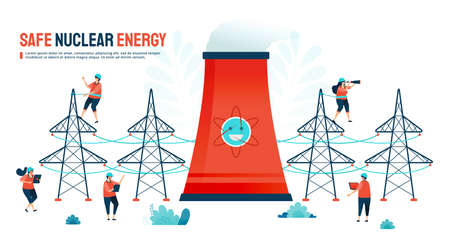Introduction to Chakras and the Subtle Body
Chakras and the concept of the subtle body have long fascinated both Eastern and Western thinkers, representing a bridge between the physical and the metaphysical aspects of human existence. While these ideas are deeply rooted in ancient Eastern philosophies, particularly within Indian yogic traditions, their resonance has grown significantly in the West, where metaphysical inquiry often seeks to understand the unseen forces that shape our lived experience. In this introductory section, we will explore what is meant by chakras and the subtle body, establishing a foundation for examining how Western metaphysics interprets these concepts. By looking at these energy centres and their associated fields through a cross-cultural lens—one that centres on Western perspectives—we create an opportunity to appreciate both the universality and the diversity inherent in human attempts to map our inner worlds. This article aims to provide not only an overview but also a thoughtful context for further exploration, inviting readers to consider how interpretations of human energy fields have evolved within Western thought, while remaining mindful of their profound roots in global spiritual traditions.
2. Western Metaphysics: Philosophical Foundations and Historic Context
The Western philosophical tradition has long been preoccupied with the nature of reality, the soul, and the unseen forces that shape human existence. From the ancient Greeks to contemporary thinkers, metaphysics in the West has provided a robust framework for contemplating energies and phenomena beyond the purely physical. This perspective, though distinct from Eastern chakra systems, offers its own insights into subtle bodies and human energy fields.
Historical Milestones in Western Metaphysical Thought
Key developments in Western metaphysics can be traced through several pivotal eras, each contributing unique perspectives on the unseen dimensions of life:
| Era | Key Thinkers | Main Concepts |
|---|---|---|
| Ancient Greece | Plato, Aristotle | Theory of Forms, Soul as an immaterial essence |
| Middle Ages | Aquinas, Augustine | Soul-body dualism, Divine hierarchy of being |
| Enlightenment | Kant, Descartes | Mind-matter distinction, Limits of sensory knowledge |
| Modern Era | Bergson, Whitehead | Vitalism, Process philosophy, Fields of consciousness |
The Unseen Aspects of Human Existence in Western Thought
Western metaphysics often grapples with questions about what lies beyond immediate perception. Plato’s allegory of the cave suggested reality is more than meets the eye; Aristotle posited an animating principle (the ‘psyche’) within living beings. Later Christian philosophers emphasised the soul’s transcendence and its connection to a divine order. In the Enlightenment period, rationalists like Descartes famously distinguished between res cogitans (thinking substance) and res extensa (extended substance), thus laying groundwork for later discussions on non-physical dimensions.
The Evolution Towards Energy Fields and Subtle Bodies
In modern times, some Western philosophers began to suggest that human experience extends into realms not easily measured or seen. Bergson proposed an élan vital—a creative life force permeating existence—while Whitehead’s process philosophy imagined reality as a web of interrelated events or energies. Such concepts laid the foundation for contemporary interest in human energy fields and subtle bodies, showing how Western traditions have evolved towards ideas resonant with Eastern philosophies.
Bridging Traditions: A Shared Quest for Understanding
Although Western metaphysics and Eastern chakra theory arise from different cultural backgrounds, both seek to explain the mysteries of consciousness and the forces that animate life. By tracing these key historical developments and philosophical shifts in the West, we gain a richer appreciation for how varied yet interconnected humanity’s search for meaning truly is.

3. Parallels and Contrasts: Comparing Eastern Chakra Systems with Western Notions
The dialogue between Eastern and Western metaphysical traditions reveals a rich tapestry of both parallels and contrasts, particularly when examining the chakra system alongside Western conceptions such as the soul, spirit, and the body-mind connection. At first glance, the Eastern understanding of chakras—as subtle energy centres aligned along the spine—appears markedly distinct from traditional Western perspectives. Yet, upon deeper reflection, intriguing similarities emerge, suggesting a shared quest to explain the unseen dimensions of human experience.
Shared Pursuits: Mapping the Invisible
Both traditions strive to articulate the invisible forces that shape our physical, emotional, and spiritual well-being. In Eastern philosophy, chakras are seen as vital focal points through which prana, or life force, flows. Similarly, Western metaphysics has long contemplated immaterial aspects of humanity—be it the soul in Christian theology or the vital spirit in ancient Greek thought—proposing that there exists more to life than mere flesh and bone. These concepts often serve analogous purposes: to provide frameworks for understanding health, consciousness, and personal transformation.
Differences in Structure and Language
Despite these common aims, differences abound in how each tradition conceptualises and describes these energies. The chakra system is remarkably systematic, with seven principal chakras each associated with specific qualities and states of being. In contrast, Western ideas about the soul or spirit tend to be less compartmentalised and more abstract—often depicted as singular entities rather than a network of interconnected centres. The language too diverges: where chakras are spoken of in terms of ‘energy flow’ and ‘blockages’, Western discourse might favour terms like ‘grace’, ‘inspiration’, or ‘psychological harmony’.
The Body-Mind Connection: Bridging Worlds
Modern Western thought has increasingly embraced holistic models that echo Eastern insights. The rise of psychosomatic medicine, for instance, reflects an awareness that mind and body are intimately linked—a central tenet of chakra theory for centuries. Practices such as meditation and yoga have gained popularity across Britain, often reframed within a secular context yet retaining their roots in energy balancing principles. In this way, contemporary Western culture is weaving together threads from both heritages to foster new understandings of health and consciousness.
Conclusion: Towards a Synthesis
In summary, while Eastern and Western systems differ in imagery and emphasis, their underlying intention—to illuminate the mysteries of human vitality—remains strikingly similar. By appreciating both their convergences and distinctions, we can cultivate a broader perspective on our own inner landscapes—a perspective enriched by centuries of collective wisdom from East and West alike.
4. Human Energy Fields Through a Western Lens
When approaching the subtle body and human energy fields from a Western metaphysical perspective, we encounter a distinctive blend of philosophy, early scientific thought, and esoteric speculation. Unlike the intricate chakra system rooted in Eastern traditions, Western thinkers have historically framed the bodys energetic dimension using concepts such as the aura, vitalism, and etheric bodies. These frameworks sought to bridge the tangible with the intangible, often walking a fine line between burgeoning science and mysticism.
The Aura: The Western Halo of Life
One of the most enduring Western interpretations of human energy is the concept of the aura—a luminous field believed to surround and emanate from every living being. While often dismissed by modern empirical science, the aura was taken seriously by Victorian spiritualists and certain early psychologists who attempted to photograph or otherwise measure this phenomenon. The auras colours and intensities were thought to reflect health, mood, and spiritual development, echoing some aspects of Eastern subtle body theory but with a unique British sensibility that emphasised individual character and moral fibre.
Vitalism and Life Force
Vitalism stands as another cornerstone in Western metaphysical views on human energy. This doctrine posited that living organisms are fundamentally different from inanimate objects due to a “vital force” or élan vital. Notable British figures such as Dr. William Gilbert and later proponents like Dr. John Hunter contributed to these ideas during the Enlightenment and Georgian eras. Though vitalism gradually receded with advances in biology and chemistry, its echoes remain present in alternative therapies across Britain today.
Comparative Theories: A Brief Table
| Theory/Concept | Main Proponents | Key Features | Cultural Context |
|---|---|---|---|
| Aura | Victorian Spiritualists, Theosophists | Luminous field; reflects mood & health; layered structure | Became popular in late 19th-century Britain; linked to spiritualism |
| Vitalism | William Gilbert, John Hunter | “Vital force” animates living beings; opposed mechanistic views | Prominent during Enlightenment and Romantic periods in Britain |
| Etheric Body | Annie Besant, Charles Leadbeater (Theosophy) | Subtle double of physical body; intermediary for life force | Theosophy movement influenced Edwardian and interwar Britain |
The British Approach: Scepticism Meets Curiosity
A hallmark of the British attitude towards such metaphysical theories has been a measured blend of scepticism and open-minded curiosity. Figures such as Sir Arthur Conan Doyle—better known for Sherlock Holmes—were both critical investigators and passionate advocates for exploring unseen forces. Even today, discussions around energy healing or biofields in the UK often carry an air of polite reserve coupled with genuine interest in holistic wellbeing.
Contemporary Resonance in British Culture
In contemporary Britain, while mainstream science maintains a cautious distance from metaphysical claims about human energy fields, there remains a lively interest within complementary medicine circles—from Reiki practitioners to biofield therapists—who draw upon these historic Western frameworks. Thus, the legacy of Western metaphysical exploration continues to shape how many Britons perceive personal health and spiritual harmony.
5. Modern British Perspectives on Energy and Wellbeing
In present-day Britain, the concept of energy fields and subtle bodies has found a unique home within a vibrant tapestry of holistic health movements and wellness practices. While these ideas were once considered the domain of the mystical or the exotic, today they are approached with a characteristically British blend of open-minded curiosity and pragmatic scepticism. Across the UK, from bustling London boroughs to tranquil countryside retreats, an increasing number of individuals are engaging with practices that promise to harmonise the subtle energies believed to underpin personal wellbeing.
The Rise of Holistic Health Movements
Holistic health in Britain has evolved beyond mere alternative therapy; it is now part of mainstream conversations about lifestyle and self-care. Yoga studios, mindfulness workshops, Reiki healing sessions, and meditation circles are common fixtures in many communities. These activities often reference the chakras and subtle body systems, interpreting them through a Western metaphysical lens that values both tradition and empirical enquiry. Many Britons, seeking balance amidst modern lifes stresses, turn to such practices not only for physical benefit but also for mental clarity and emotional resilience.
Modern Interpretations of Subtle Energies
British interpretations of energy fields tend to be grounded yet imaginative, blending Eastern philosophy with Western scientific sensibilities. Rather than simply accepting ancient doctrines at face value, practitioners in the UK frequently seek ways to integrate these concepts with contemporary understandings from psychology, neuroscience, and even quantum physics. This approach allows for both reverence towards traditional wisdom and a critical engagement that resonates with British intellectual traditions.
Integration into Everyday Life
The language of energy—talking about being grounded, centred, or in tune—has seeped into everyday British conversation. Workplaces offer mindfulness breaks; NHS initiatives increasingly recognise the value of meditation for mental health; and even schools introduce mindful breathing exercises to pupils. For many Britons, attending to one’s subtle energies is less about spiritual dogma and more about practical strategies for enhancing daily living.
Cultural Acceptance and Gentle Scepticism
While there is growing acceptance of these ideas, typically British reserve ensures that enthusiasm is balanced by healthy scepticism. Discussions about chakras or energy fields are often couched in language that invites exploration rather than demands belief. People are encouraged to ‘give it a go’ and see what works for them—a testament to Britain’s longstanding tradition of pluralism and individual choice.
The Future of Energy-Based Wellbeing in Britain
Looking forward, it appears likely that British culture will continue to engage with subtle body philosophies in this open yet discerning manner. As new generations seek meaning and connection amid rapid change, the integration of metaphysical perspectives with evidence-based approaches may further enrich the national conversation around health and wellbeing. In this way, Britain carves out its own path—one that honours both tradition and modernity—in understanding how invisible energies shape our human experience.
6. Bridging Science and Metaphysics: Ongoing Debates and Research
The intersection of science, metaphysical traditions, and popular culture in Britain has become a lively arena for discussion concerning chakras and the subtle body. In recent years, British academics, holistic practitioners, and the general public have increasingly engaged with these ideas, each bringing their own perspectives to bear.
Scientific Inquiry: Seeking Tangible Evidence
Within the scientific community, efforts have been made to explore the physiological basis of energy fields. Researchers in neuroscience and psychology have investigated whether practices like meditation or yoga—often associated with chakra balancing—yield measurable changes in brain activity or well-being. While some studies suggest potential benefits for stress reduction and mental clarity, mainstream science remains cautious, often attributing positive outcomes to placebo effects or the general benefits of mindfulness rather than to any metaphysical energies per se.
Metaphysical Traditions: Ancient Wisdom in Modern Britain
Parallel to this, metaphysical traditions rooted in both Eastern philosophies and Western esotericism continue to thrive in British society. Many holistic therapists and spiritual practitioners draw upon concepts such as chakras, auras, and meridians in their work, blending ancient wisdom with modern therapeutic techniques. This synthesis is evident in the growing popularity of complementary therapies across the UK, particularly in urban centres where diverse traditions intersect.
Popular Culture: Embracing and Questioning Energy Concepts
Chakras and subtle body theories have also permeated British popular culture. From wellness workshops to television programmes, there is a visible fascination with energy healing and spiritual growth. Yet this widespread interest is accompanied by a healthy scepticism—a hallmark of British pragmatism. Debates on social media platforms and in the press frequently highlight both the allure and the contentiousness of these ideas, reflecting a national tendency to balance open-mindedness with critical inquiry.
Convergences and Points of Contention
Areas of convergence are found where scientific research acknowledges the value of practices traditionally linked to chakras—such as mindfulness or breathwork—even if not endorsing their metaphysical underpinnings. Conversely, points of contention persist around claims that lack empirical support or are perceived as cultural appropriation. The British context thus encourages ongoing dialogue between tradition and innovation, fostering an environment where ancient teachings can be re-examined through the lens of contemporary evidence and ethical considerations.
7. Conclusion: Towards an Integrated Understanding
The journey through chakras and the subtle body, viewed through the lens of Western metaphysics, reveals not just a bridge between two worlds but a rich tapestry of human experience. In reflecting upon this dialogue, it becomes clear that both Eastern and Western traditions possess profound insights into the nature of human energy fields. The British perspective, grounded in both empirical enquiry and philosophical contemplation, encourages a respectful and inquisitive attitude towards these ancient systems.
While the East offers time-honoured frameworks for understanding subtle energies—rooted in yoga, Ayurveda, and spiritual practice—the West brings to bear its legacy of metaphysical speculation and scientific scrutiny. British thinkers, from the early mesmerists to modern holistic practitioners, have often sought to reconcile observable phenomena with the mysteries of consciousness and vitality. This willingness to engage with the unknown without relinquishing critical analysis is a hallmark of the British approach.
Dialogue between East and West does more than simply borrow terms or concepts; it invites us to reconsider our assumptions about the self, health, and reality itself. By integrating chakra theory with Western models of psychology and physiology, we open new avenues for healing and personal growth that honour both tradition and innovation. Such integration need not dilute the depth of either tradition; rather, it enriches them by fostering mutual respect and creative exchange.
As interest in holistic well-being continues to grow across Britain, there is a distinct opportunity for communities, educators, and practitioners to cultivate spaces where Eastern wisdom can be explored alongside Western insight. This might mean adapting language, examining cultural context, or developing new forms of practice that resonate with local values while remaining true to the spirit of both traditions.
Ultimately, understanding chakras and the subtle body through a Western metaphysical lens is not about adopting foreign beliefs wholesale nor dismissing them as mere superstition. It is about recognising that knowledge flourishes in dialogue. By bringing together diverse perspectives—from British philosophy to Indian spirituality—we create a more nuanced appreciation of what it means to be human: complex, energetic beings seeking connection, meaning, and wholeness within a vast universe.


